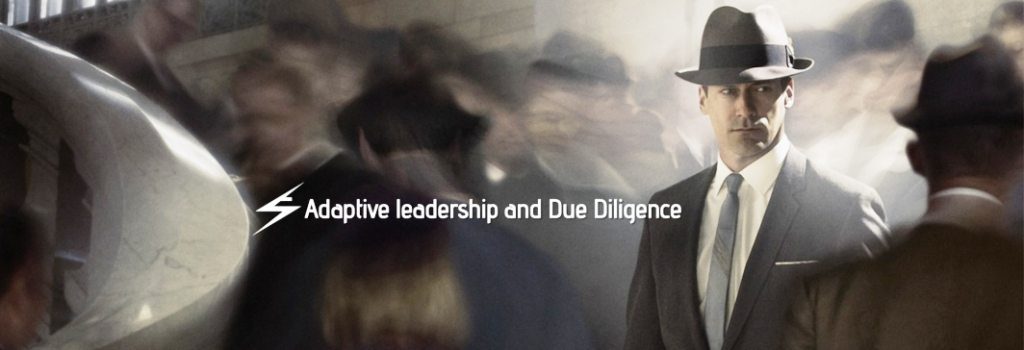Adaptive leadership and Due Diligence
Just as a doctor generates a diagnosis before establishing a patient’s treatment options, the best solutions to organizational challenges emerge from understanding the true nature of the problem before attacking it.
Tough challenges require methodical observation before action. Adaptive leadership is a particularly powerful approach when used to address complex challenges that emerge as a consequence of the status quo. Over time, the particular structure and culture of an organization become ingrained.
To fully diagnose the structural deficiencies of an organization, an observation must be made. This means understanding:
1. What behaviors are rewarded by compensation.
2. What functions or roles in the organization are most valued.
3.How the structural organization of people and departments impacts decision making.
4. How hiring and orientation impacts the organization.
5. How the size, payment, and other criteria of the organization’s board of directors impacts decision making and valuing.
Another aspect of making a solid diagnosis of adaptive challenges is understanding and assessing the cultural norms that impact an organization. An organization’s culture also reveals its “folklore,” which is an enormously influential factor in shaping the way members of an organization view themselves, one another, and the organization itself.
Rituals and group norms are important parts of folklore. Closely aligned to folklore is the notion of “default interpretations and behavior.” These influences can be direct obstacles to any organization’s adaptive capacity. Over-riding or subverting the “defaults” of an organization is a crucial component of adaptive leadership.
Adaptive leadership requires people to change their expectations and behaviors. These elements are distinct from technical tasks and can be considered the “human” aspect of organizational change. Because adaptive challenges are rooted in beliefs, value-systems, and interpersonal loyalties, purely technical solutions invariably underperform or fail.
One way to peer beneath the technical exterior is to “listen to the song beneath the words” of an organization’s culture and folklore. Factors such as “informal authority” and team dynamics are often evident in body language, emotional responses, and energy levels. Looking beneath the surface of activity in an organization allows for the necessary identification of an organization’s specific “adaptive challenge archetype.”
Four main adaptive challenge archetypes are identified in the theory of adaptive leadership. The four archetypal challenges frequently coexist and overlap in a distressed organization.
1. Conflict Between Values and Behavior. Organizations often “talk the talk” but fail to follow through on lofty ideals. One common example is verbally praising teamwork and collaboration but rewarding individual achievement.
2. Commitments in Competition. Organizations are complex and, as such, often make conflicting investments and commitments. Resolving these conflicts involves making painful decisions.
3. Unspeakable Speaking. Honesty in communication is a difficult and potentially volatile policy, but it is necessary for making meaningful diagnoses and evaluating options.
4. Avoiding Work. Members of an organization that is under stress or facing adaptive challenges often divert attention and responsibility while failing to work or produce for the organization.
People within an organization are stakeholders in that organization. They are motivated by personal desires and engage in making alliances and forging loyalties according to their ambitions and personal values. These values often underlie behaviors. To engage in adaptive leadership it is necessary to engage people at the level of personal values.
It is also necessary to discover and understand loyalties that are present between members of an organization. This means in dealing with each individual, a leader must take into account the people to whom that individual is loyal. The organization is best viewed as a “vegetable stew” of loyalties and alliances.
When change occurs in an organization it is necessary to distribute unavoidable losses in a way that minimizes damage and disruption. This means naming the potential losses, both material and emotional, to individuals and subgroups within the organization. Adaptive leadership means helping each stakeholder and group withstand required initiatives and expected losses.
Five qualities can be used to generate a specific rating of adaptive capacity for an organization:
1. Elephants in the Room: The number of large, systematic problems in the organization.
2. Shared Responsibility: The amount of delegation that takes place in the workplace.
3. Independent Judgment: How open the company is to independent thinking.
4. Leadership Capacity: How effective succession planning is within the organization, and how much leadership talent is present.
5. Institutionalized Reflection and Continuous Learning: How successful on-the-job training and learning initiatives are.


